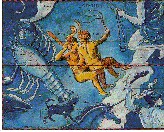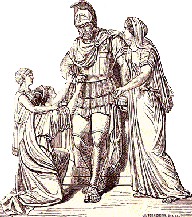UPDATE |
Webmaster's note |
| |
This site has been restored to serve as an extension of Professor Gibbons' work: The Death of Jeffrey Stapleton; Exploring the Way Lawyers Think. This book introduces, explains and applies Perceptual Control Theory, PCT, to show how lawyers think. A sample of the book with covers, front end, and Recommended Readings is available here. For the relationship between the book, this site and papers available here, please see the Publisher's note, For more on the book, how to preview it and how to get it, see the publisher's website.
Regarding this site, Professor Gibbons says in Story / 2. The Experience of Will, at 2:40: "The theory of law I am spelling out here is based upon a single idea — the idea of will. I have drawn from a lot of sources to get his description of will, but primary among them is the work of William Powers and his Control Systems Group, and the work of John Searle, a cognitive philosopher."
William Powers is the creator of Perceptual Control Theory, so with this statement, (and the illustrations that follow at 4:05), Professor Gibbons makes it clear that his work is an application of PCT.
For much more up-to-date information regarding PCT and applications to fields other than law, see the literature list included in the book sample.
This site recreates the original site, based on a combination of downloading the original site from the Wayback machine, and files from professor Gibbons' laptop, which filled numerous gaps.
This restoration features an updated, completed version of the story and most files from the original site. Where appropriate, text has been edited for simplicity and current conditions. |
OVERVIEW |
Introduction |
Introduction
Overnview
FAQ
|
Any body of law is based upon several things, most obviously upon the culture and history from which it has developed and upon the desires of the people it governs. The biological basis of law identifies the universals that lie deeper than that, that underlie all law. Just as the great variety of human languages obscures the common biological basis of language, so also the variations in bodies of law mask a common biological process upon which all law is based. That basis and the underlying legal structure that results from it is the subject of this theory.
|
 |
| |
This site presents the theory in three ways. The Core sets out the central propositions of the theory, outlining the full picture without frills. Frills are the business of The Story: Rights + Wrongs, which sets out the theory in narrative form. The Purpose explains the relationship between law and freedom. |
| Overview |
| The
Biological Basis of Law website has two aspects. The first lays out the theory, the second contains concrete material that sheds light on the theory or applies it to legal problems. We have provided the first aspect, in the form of the Story, the Purpose, and the Core, hoping that you and others will amplify, test, critique, and apply the theory, contributing to the second aspect of the site. |
The
Story is a series of Flash movies containing video clips and other multimedia elements that gives a narrative introduction to the Biological Basis of Law.
The Purpose is an essay detailing the major themes of the theory for people who are more accustomed to assimilating information in that form.
The Core contains the main points of the Biological Basis of Law in an outline structure.
If this is your first visit to this site, it is recommended that you view the Story first, the Purpose second and the Core last, as that seems to be the most natural way to approach the different sections. Of course this is simply a recommendation and you should feel free to explore the site in whatever manner you wish.
|
 |
Is vengeance justified?
Each area of the site discusses the basis of law in a different manner.
|
| FAQ: |
| What
is the Biological Basis of Law? |
| Just as the great variety of human languages obscures the common biological basis of language, so also the variations in bodies of law mask a common biological process upon which all law is based. That basis and the underlying legal structure that results from it is the subject of this theory. |
| Who developed this theory? |
This theory began in a conversation between Hugh Gibbons and Professor Theodore Lowi in 1970. Lowi had written the very successful The End of Liberalism, in which he posited the development of "juridical democracy," a principle-based regime that he argued would replace the worn-out "interest group" democracy typical of the American system. A government driven by unprincipled interests could never achieve justice. As a lawyer, it was Gibbons's job to figure out what this justice was about and the shape of a regime that had justice at its core.
Gibbons has spent the last third of a century pursuing that idea with the able assistance of many hundred law student members of his course in Legal Philosophy. The trail of that study, which began as a normative pursuit (building a "better" system), became over the years a descriptive one (what do we have? where did it come from?). The contribution of the students to the theory cannot be overemphasized, particularly the contribution of Nicholas J. Skinner, whose observations and formulations permeate the theory. |
| Who created this website? |
| BiologyofLaw.org was originally created by Brad Gennings, who was responsible for the implementation and graphical design of the site, and Kee Kim and Hugh Gibbons, who were responsible for the content. |
| Can I download any of this stuff? |
| Yes, have some. Click here to open the download page. |
| |
|

